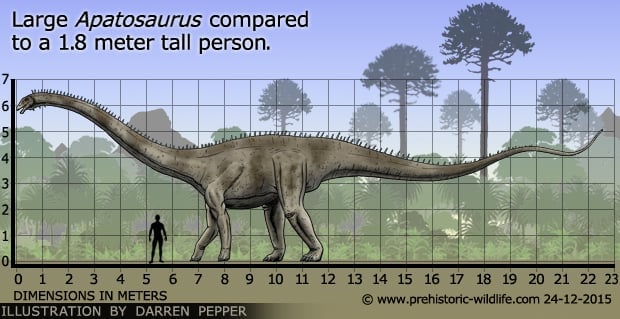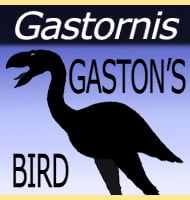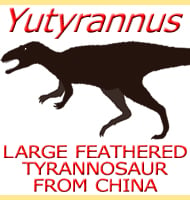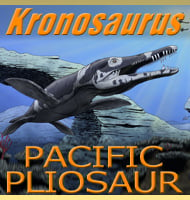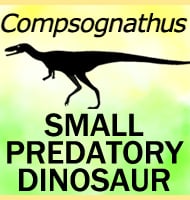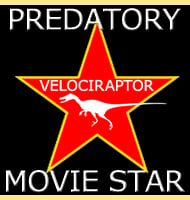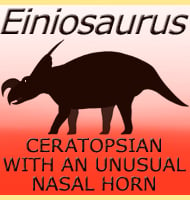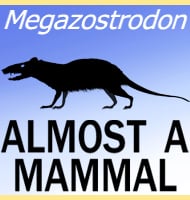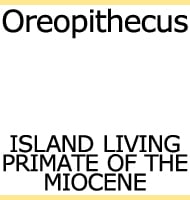In Depth
Apatosaurus or Brontosaurus?
Even though Apatosaurus is one of the sauropod dinosaurs best known to palaeontology yet most people confused it with Brontosaurus. The reason for this goes all the way back to 1879, roughly two years after the naming of Apatosaurus ajax when a new sauropod specimen was given the name Brontosaurus excelsus by Othniel Charles Marsh, the same person who named Apatosaurus earlier in 1877. This specimen was in a better state of preservation than the earlier Apatosaurus and also clearly had several notable differences which led Marsh to the conclusion that it was a similar but altogether different genus.
No one put much more thought into further classifying the two genera until 1903 when Elmer S. Riggs studied the fossils. One of the key areas that Riggs is remembered for is his study of sauropods and after reviewing the fossils he found that while Brontosaurus excelsus was different to Apatosaurus ajax, the differences were not great enough to warrant the creation of a new genus. The majority of other palaeontologists in the twentieth century agreed with this conclusion and for that time Brontosaurus has been a junior synonym to Apatosaurus. This follows standard naming procedure where for the exception of very rare and special cases (see Tyrannosaurus) the name of the first genus created must be used to refer to all subsequent discoveries. In this case Brontosaurus excelsus was renamed Apatosaurus excelsus.
Now normally the above would be a cut and dry procedure that has been done countless times in the history of zoological nomenclature for other genera, but not so in this case. The naming confusion for the general public begins in 1905 with the mounting of an Apatosaurus skeleton for public display. Here it was not because the people reconstructing the skeleton had to use parts of other sauropods to complete the skeleton, including the wrong skull that was the problem, but the fact that they named it Brontosaurus despite the new classification by Riggs two years earlier.
The new reconstruction nonetheless gave museum patrons an idea to the sheer size that the dinosaurs could attain, and news of the display spread around the world, albeit under the name of Brontosaurus. As such Brontosaurus began to appear in popular culture and even became one to the first dinosaur movie stars. This included the 1914 animated short called Gertie the Dinosaur and the 1925 silent film The Lost World where a stop motion Brontosaurus features in a climatic sequence as it goes on a rampage in London. From here the name Brontosaurus became common usage, something eased by the fact that it translates as ‘Thunder lizard’. The true name of Apatosaurus however, ‘deceptive lizard’ might now be more correct than ever before.
In 2015, a detailed study by Tschopp, Mateus and Benson concerning fossils of Apatosaurus and Diplodocus came to a clear conclusion; that fossils of Apatosaurus excelsus were in fact different enough from the Apatosaurus type species to keep them as a new genus. This meant that Brontosaurus was a valid genus after all, and so all fossils described as Apatosaurus excelsus have now been re-labelled as Brontosaurus excelsus.Reconstruction of Apatosaurus
Many specimens of Apatosaurus are known but they usually share a problem common to many other sauropod genera in that usually they are of just partial postcranial remains. Like many others Apatosaurus went a long time without a complete skull confirmed to be its own. When the infamous 1905 reconstruction was made the skull mounted upon this skeleton was actually a composite of different Camarasaurus skull parts and teeth, something that was not only incorrect but resulted in every depiction of Apatosaurus for most of the following century being given a ‘box-like’ skull and head. When an Apatosaurus skull was eventually discovered in 1970, it was found to have a long sloping snout, nothing like Camarasaurus but very similar to Diplodocus.
In fact the skull is not the only similarity between Apatosaurus and Diplodocus, the overall shape of the skeleton and proportions are also very similar. The key areas of difference though are Apatosaurus’s more robust cervical vertebrae that are shorter than those of Diplodocus, as well as legs that are both longer and thicker. The latter indicates support for a sauropod that was similar in proportion but much more heavily built than Diplodocus. Still, because of the overall similarity, Apatosaurus now sits within a sub-group to the larger Diplodocidae along with other similar sauropods such as Barosaurus and Dinheirosaurus.Apatosaurus as a living dinosaur
Because of its popularity Apatosaurus is one of the most often recreated dinosaurs in art and exhibits. However most of the early reconstructions of Apatosaurus wallowing in lakes and swamps, arcing its neck to reach up into trees or limply dragging its massive tail behind its body are now considered to be quite inaccurate.
Analysis of the areas where Apatosaurus fossils are known from has found them to have been deposited in areas that were dry and not waterlogged like swamps would have been. Further study incorporating other fossil specimens of different animals and plants has revealed these areas to have been areas of fairly open ground that supported low growing vegetation intermixed with areas of sparse woodland.
Another factor to consider that counts against Apatosaurus spending most of its time in the water is that of water pressure. As you go deeper down in a fluid body, the weight of the fluid on top of whatever level you are on pushes down on the fluid where you are resulting in a higher pressure. If Apatosaurus submerged its body in water then not only would it have to deal with this pressure but it would be pressing upon the large surface area that would be Apatosaurus’s body. This would make a number of bodily functions including respiration more difficult because of the force of the water pressure compacting the lungs, making inside a lake possibly one of the most uncomfortable places for Apatosaurus to choose to be.
Dedicated research to the flexibility of Apatosaurus’s neck has revealed that it was quite inflexible, especially to the extent of strongly curving almost serpentine poses of early reconstructions. Instead the neck seems to have been held out straight at a horizontal to slightly upwards angle. This neck would have allowed Apatosaurus to sweep its head in an arc in front of the body as it cropped low to medium height vegetation without much need to constantly expend energy on moving its body. However Apatosaurus seems to have been restricted to this level of vegetation as the cervical (neck) vertebrae would not have allowed Apatosaurus to reach high up into the trees with its neck. This may actually be a form of niche partitioning on the part of Apatosaurus as other sauropods such as Brachiosaurus had a body posture that was better suited to allow them to feed from the tree canopy. Niche partitioning behaviour like this would allow several types of large herbivore to live in the same ecosystem without directly competing with one another.
To counterbalance the forward facing neck the tail would have been held high off the ground, and not dragged along it like most antiquated reconstructions. The tail may have served more of a purpose than just counterbalancing the neck as the vertebrae narrow towards the end where it thins to a whip like end. Why the tail did this is uncertain but it does seem to be a signature feature of the diplodocid sauropods.
Apatosaurus’s respiration has been another area of study as how such a large creature can get enough oxygen from breathing through such a long neck raises a lot of questions. Slowly however some possible answers have come to light, the most plausible being that Apatosaurus had a respiratory system similar to that found in birds. This would involve a process of air sacs that ran down the length of the neck to the lungs that supplied a constant amount of new unbreathed air so that Apatosaurus always had a supply of oxygen coming in. The exact system may not however have been identical to that seen in birds but would have likely been present in a more primitive form. Fossil evidence that supports the theory for such a respiratory system has been found for other sauropods as well as for other different kinds of dinosaur such as the theropod Aerosteon. The final bit of support for this theory comes from the birds themselves. Since fossil evidence now proves that birds evolved from dinosaurs, their respiratory system would have likely been descended from them too. How far back this respiratory blue print goes remains uncertain, but if it goes as far back as the common ancestors to dinosaurs, then it makes it very likely that Apatosaurus also had one.
A more efficient form of respiration also imparts the possibility of a warm blooded metabolism. Such a metabolism would have been much more efficient for moving an animal the size of Apatosaurus, although the exact principal behind this warm metabolism may not be as simple as being like that of mammals. Animals that have a large body mass but a relatively small surface area are known to have to live with the effects of what is termed gigantothermy. In the simplest terms this means that the body surrounding the internal organs is so thick that the outer layers of tissue end up insulating the internal layers against heat loss so that the base temperature of the animal is higher than you might expect it to be. This results in the body metabolism operating at a level similar to that traditionally associated with warm blooded creatures like mammals.
Another hall mark of a warm blooded metabolism comes from studies of the bones of juveniles and how fast they grew. While no one knows for certain exactly how long Apatosaurus lived for, juveniles are thought to have reached almost full size in just ten years. Warm blooded creatures are known to attain adult size in a very short space of time because the metabolism operates at a faster rate than in cold blooded creatures such as crocodiles which can continue growing for decades before reaching maximum size.
The fast growth of juveniles was probably an evolutional response to the large predators that roamed North America at the end of the Jurassic such as Allosaurus and Saurophaganax. Although the idea that sauropods relied upon their immense size alone to protect them from attack does not have as much support as it used to (titanosaurid sauropods like Saltasaurus had bony armour on their backs) a fully grown Apatosaurus would have been a very difficult prey animal for an Allosaurus when you consider that there would have been other smaller and easier dinosaurs for it to hunt.
Further Reading
– Structure and Relationships of Opisthocoelian Dinosaurs. Part I, Apatosaurus Marsh. – Publications of the Field Columbian Museum. Geological Series (2): 165–196. – Elmer Riggs – 1903. – Description of the palate and lower jaw of the sauropod dinosaur Diplodocus (Reptilia: Saurischia) with remarks on the nature of the skull of Apatosaurus. – Journal of Paleontology 49 (1): 187–199. – J. S. McIntosh & D. S. Berman – 1975. – Remarks on the North American sauropod Apatosaurus Marsh. – Sixth Symposium on Mesozoic Terrestrial Ecosystems and Biota, Short Papers, A. Sun and Y. Wang (eds.), China Ocean Press, Beijing 119–123 – J. S. McIntosh – 1995. – Ontogenetic histology of Apatosaurus (Dinosauria: Sauropoda): new insights on growth rates and longevity. – Journal of Vertebrate Paleontology 19 (4): 654–665. – Kristina A. Curry – 1999. – Neck posture and feeding habits of two Jurassic sauropod dinosaurs. – Science 284 (5415): 798–800. – K. A. Stevens & J. M. Parrish – 1999. – A new method to calculate allometric length-mass relationships of dinosaurs. – Journal of Vertebrate Paleontology 21: 51–52. – Frank Seebacher – 2001. – Dinosaurian growth patterns and rapid avian growth rates. – Nature 412 (6845): 429–33. – Gregory, M. Erickson, Kristina Curry Rogers & Scott A. Yerby – 2001. – A new specimen of Apatosaurus ajax (Sauropoda: Diplodocidae) from the Morrison Formation (Upper Jurassic) of Wyoming, USA. – National Science Museum monographs 26: i-118 ISSN:13429574. – Paul Upchurch, Yukimitsu Tomida, Paul M. Barrett – 2004. – Bully for Apatosaurus. – Endeavour 30 (4): 126–130. – P. Brinkman – 2006. – Burly Gaits: Centers of mass, stability, and the trackways of sauropod dinosaurs. – Journal of Vertebrae Paleontology 26 (4): 907–921. – Donald M. Henderson – 2006. – Inferences of diplodocoid (Sauropoda: Dinosauria) feeding behavior from snout shape and microwear snalyses. – In Farke, A. A. PLoS ONE 6 (4): e18304. – J. A. Whitlock – 2011. – Aging, Maturation and Growth of Sauropodomorph Dinosaurs as Deduced from Growth Curves Using Long Bone Histological Data: An Assessment of Methodological Constraints and Solutions. – PLoS ONE 8(6): e67012. – E. M. Griebler, N. Klein & P. M. Sander – 2013. – A specimen-level phylogenetic analysis and taxonomic revision of – Diplodocidae (Dinosauria, Sauropoda). – PeerJ 3:e857. – E. Tschopp, O. Mateus & R. B. J. Benson -2015. – First report of Apatosaurus (Diplodocidae: Apatosaurinae) from the Cleveland-Lloyd Quarry in the Upper Jurassic Morrison Formation of Utah: Abundance, distribution, paleoecology, and taphonomy of an endemic North American sauropod clade. – Palaeoworld. 25 (3): 431–443. – John R.Foster & Joseph E.Peterson – 2016.
